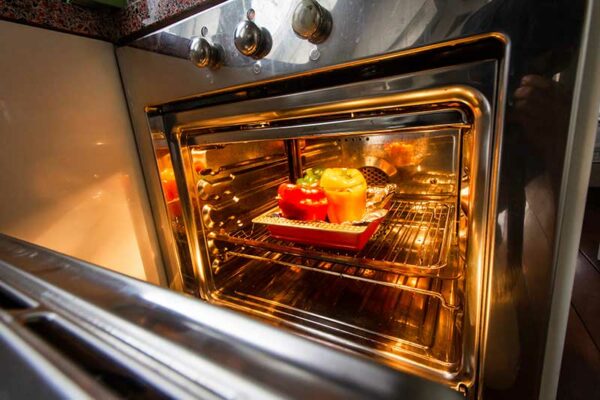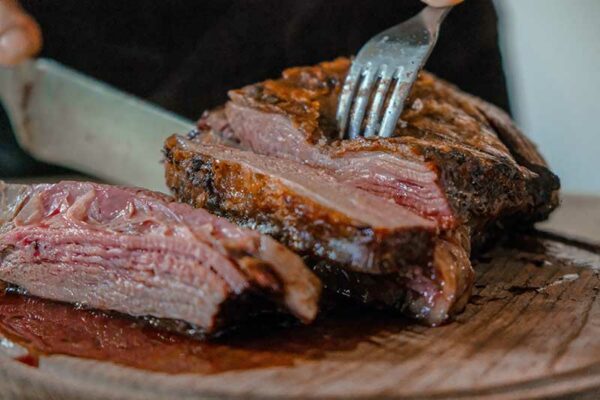The customer service team is always listening, taking notes, and quantifying complaints to ensure our products are continually improved. Due to selling directly to you, the customer, via Amazon, we can use product reviews to help us improve our existing products or help further development of new products.
Table of Contents
What is simmer?What is the difference between simmering and boiling? If you’ve ever tried to cook something that requires a very delicate balance of temperature and time, then you know just how crucial that difference can be.
However, it can be very difficult to determine the exact line between the two and even harder to stay precisely in the right spot. Maybe only the food thermometer can tell it easily. To help make sure your dishes come out perfect, here’s a breakdown of what simmer is, what temperature is simmering on the stove, and how to keep a simmer.
Boiling vs. Simmering
The difference between boiling and simmering is quite simply a difference in degrees. A simmer is around 180-190 degrees, whereas a boil is around 212 degrees.
Of course, there are some critical physical differences between the two as well, which can let you know whether your water is at a simmer or a boil. A simmer is gentler, with tiny bubbles streaming up beneath the surface. A boil, on the other hand, has a broken surface that bubbles and pops.
While a couple of degrees separate the two, but the line can often be fuzzier than you might expect. For example, a quick simmer is more or less the same thing as a slow boil. At the other end of the spectrum, a slower simmer could be looked at as a temperature ideal for poaching.
Benefits of Simmering
Although a recipe may call for simmering, that doesn’t really tell you why you need to simmer. There are several specific benefits that simmering provides over similar cooking methods.
Simmering is versatile when it comes to cooking time. It can cook dishes that require anywhere from a few minutes to hours. The lower temperature than boiling gives you better control over how done the dish will be, reducing the chances of overcooking your food.
Simmering can also greatly enhance the flavor of a dish. All the flavors you add to the liquid will have time to spread and infuse whatever solids you have. It also provides ample time for harder solids to break down, infusing the liquid with those delicious flavors.
Simmering is great when you need to soften certain types of food. A long cooking time plus sub-boiling temperature can soften your food without reducing it to a tasteless mush or only softening the outer layer.
Lastly, simmering minimizes waste and lost nutrition and flavor. Since you’re eating the liquid with the solid, you still get to enjoy all the taste and nutrition that comes from the solids breaking down, as opposed to other cooking methods where all that flavor would get left in the pan.
When to Simmer
Simmering may seem very similar to boiling, but they serve fairly different purposes when it comes to cooking. While boiling is good for quickly heating food, it can also be too harsh for certain ingredients. If you boil some types of fish, you may end up with a mushy mess, but if you simmer them instead, it can come out perfect.
On the same note, simmering tends to provide more thorough heating for dense solids. Where boiling might make the outer edges very hot and leave the inside frozen, simmering will provide lower heat over a longer period of time, allowing the entire solid to get up to the proper temperature.
How to Simmer
When starting a simmer, there are two primary options available. You can either start low and heat up to a simmer or you can go to a boil, then ease down to a simmer.
If you’re going with the first option, then you want to apply heat until the liquid is just starting to show signs of bubbling and faint steam. Lower the heat in accordance with whether you’re looking for a slow simmer, a rapid simmer, or something in between.
If you want to start with a boil and work your way down, then crank up the heat and get to a boil. This is the fastest strategy because it’s actually impossible to overshoot your target by too much. A boil is the hottest water can be (at 212 degrees), so once you get there, just ease off on the heat a bit and wait for the water to calm a bit.
Once you’ve got a nice simmer going, you need to maintain it. In many cases, this involves a lot of trial and error in figuring out exactly how hot the different settings on your stove are, as well as how conductive the particular pot in question is.
Some quick tricks include moving the pot partially off the burner so that only a portion of the heat goes to the pot, resulting in more of a simmer and less of a boil.
Of course, you do still need to be careful about there not being enough heat to maintain even a simmer. You can also opt for a flame tamer ring, a popular choice for adjusting the heat of your stove and how much gets to your pot.
Simmer Temperature Chart
There are three main types of simmers to keep in mind:
- Slow simmers are generally closer to 185 degrees and characterized by a lack of motion. Bubbles will be barely visible and the water won’t move much at all, making this a good choice for many dishes that require longer, slower cooking.
- Regular simmers happen around 195 degrees and have the characteristic tiny streams of bubbles.
- Rapid simmers tend to be around 205 degrees, which still puts them a few degrees short of a typical boil. While rapid simmers and boils do both have a lot of movement, the easiest way to tell them apart is that rapid simmer still tends to have tiny streams of bubbles, whereas boils have much larger individual bubbles.
How to Use a Thermometer to Tell If Water Is Simmering
As you may have gathered, there are two main ways to tell if your water is simmering.
First, a quick look at the water and the amount and size of the bubbles should give you a pretty good idea. However, that isn’t necessarily foolproof and it can be difficult to tell exactly how much of a simmer you’ve got going. Therefore, it’s a good idea to verify the type of simmer with a quick thermometer check.
Remember that 185 is roughly a slow simmer, 195 is a standard simmer, and 205 is a rapid simmer.
If you’re using a ThermoPro Food Thermometer, then measuring a simmer couldn’t be easier. Simply insert the tip into the water (but not so deep that it touches the bottom of the container, which will be hotter), then wait a few seconds and get accurate reading the temperature.
Below are some ThermoPro thermometers to help you to achieve perfect simmer cooking.
Tips for Keeping a Simmer
A simmer can be tricky to get right, but there are a couple of ways you can make the process quite a bit easier.
First, regulate the temperature not just from below, but from above as well. Turning up the heat is one way to raise the temperature of the water, but adjusting the lid can be quite effective as well, especially for small adjustments.
If you put the lid on a pot with a slow simmer, the trapped hot air will drive up the temperature of the water, giving you that little extra push you needed to get into a regular or rapid simmer. Likewise, taking off the lid for a couple of moments can release a lot of steam and bring the temperature down if you’re aiming for something slower.
Second, adjusting the flow and distribution of heat into the pot can make a big difference. If you’re working with a big pot that has a lot of surface area on the bottom, move the pot relative to the burner, allowing a different part to get heated.
You can also stir the water, distributing the heat more evenly and making it easier to tell at a glance what kind of simmer you’ve got going.
Third, don’t be afraid to add a little extra liquid. If you want to drive the temperature down a bit, then adding some more broth or water can accomplish that faster than nearly any other method.
The Bottom Line
Simmers are incredibly useful for cooking delicate ingredients and making your soups just right. They can be spotted at a glance, but if you want to be totally sure about what kind of simmer you have, you can always use a thermometer and see if it’s closer to 185, 195, or 205 degrees. Use the tips and tricks listed above to make sure that your food comes out perfect every time.









